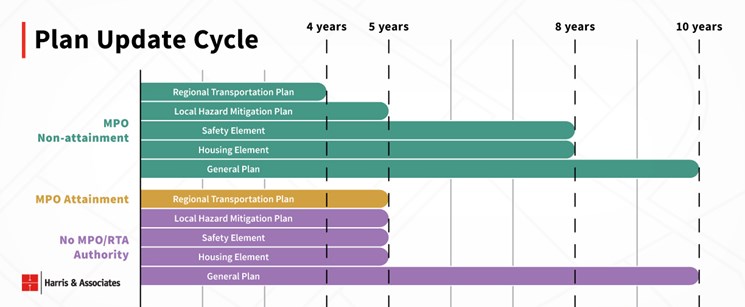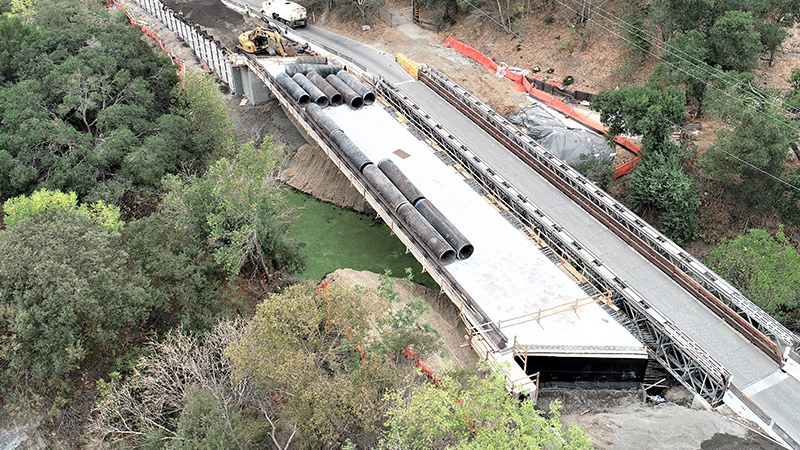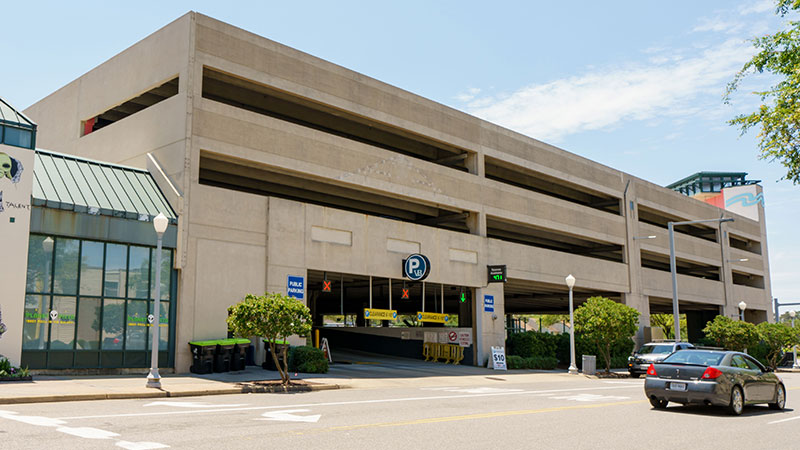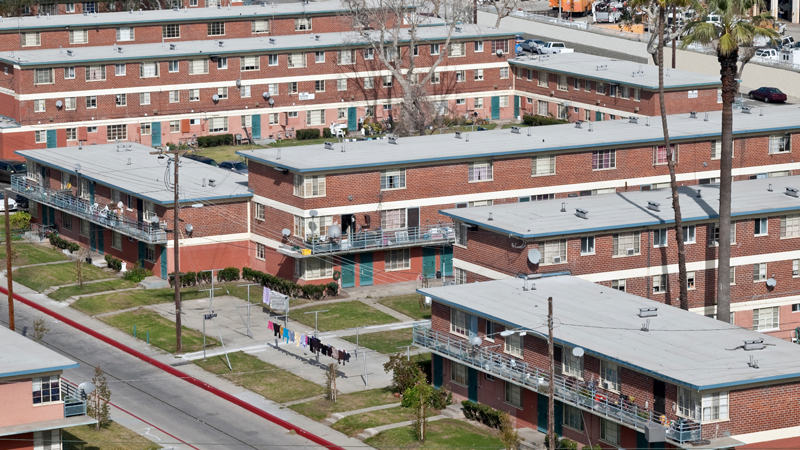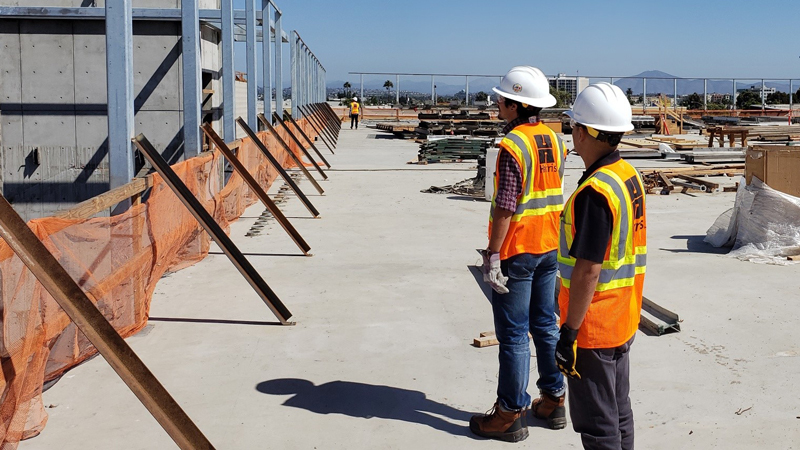3.8 minute read
July 22, 2020
In case you missed it, we’ve recently taken a close look at both the statewide and local legislative initiatives and policies that make California a national model for proactively building up climate resilience.
To work effectively, these policies require advanced plan coordination through strategic update cycles. Communities use general plan updates to address all new legislative requirements passed since their previous update. That said, the Office of Planning and Research’s (OPR) annual planning survey in 2018 found that, while nearly 90% of all local jurisdictions comply with housing element requirements, only 30% of plan safety elements comply.
In response, Senate Bill (SB) 1035 links the timing of the safety element and SB 379 requirements to the housing element. This is done to challenge communities to begin addressing their most relevant issues and encourage regular updates to climate adaptation strategies.
How often communities must update their housing element depends on their Metropolitan Planning Organization (MPO) designation. To strengthen the connection between housing and transportation planning, SB 375 amendments to Government Code (GC) sections 65080 and 65588 made changes to some scheduling provisions. These improve coordinating regional housing need assessment (RHNA) and local government housing element updates with schedules for adopting regional transportation plans (RTP).
With the exception of regions and local governments unrepresented by an MPO or a council of government (COG), SB 375 changed RHNA and housing element schedules based on RTP adoption dates pursuant to transportation planning requirements.
Housing element schedules for non-attainment MPOs, attainment MPOs, and local governments not represented by an MPO include:
- Non-attainment MPOs1 adopt RTPs every four years. RHNA and housing element schedules must be coordinated with every other RTP. This requires updating housing elements every eight years, no later than 18 months after RTP adoption.
- Attainment MPOs adopt RTPs2 every five years. SB 375 did not link or change RHNA and housing element update schedules based on the RTP adoption date. Housing elements are required to be updated every five years and adopted by the date specified in the statute. Attainment MPOs or Regional Transportation Planning Agencies (RTPAs) may elect, within a specified timeframe, to update RTPs on a four-year schedule—this would change the housing element schedule from five to eight years. If the election is made, GC 65588(e)(2)(C) specifies that the due date for the fifth revision of the element is 18 months after adoption of the first RTP following the election.
- COGs and local governments not covered by an MPO or RTPA: SB 375 did not link or change RHNA and housing element update schedules based on the RTP adoption date. Housing elements are required to be updated every five years based on the schedule specified in statute.
- General Plans: General plans typically have a twenty year lifespan. Depending on the number of element updates that occur between comprehensive updates, a jurisdiction may choose to review and comprehensively update a general plan for internal consistency to ensure alignment of goals, policies, and implementation measures. In order to stay relevant in a constantly evolving policy landscape in California, cities and counties should consider updating their general plan every ten years.
Update Cycles for Relevant Plans by MPO Designation
The above graphic shows the update cycles and lifespan for relevant plans by MPO designation.
Alignment of planning update cycles can be complicated and if done thoughtfully can create efficiencies in update process, environmental reviews, regional coordination, access to funding, and implementation. The Harris & Associates team is happy to partner with you to support a better understanding of your plan update cycle.
In the meantime, learn more about California and local government’s shift to integrated climate adaptation planning, and learn how communities are implementing climate adaptation strategies without grant funding. You can also visit the State’s Adaptation Clearinghouse or the Office of Planning and Research’s General Plan Guidelines page.
Harris & Associates offers a wide range of strategic advisory services to support jurisdictions and special districts across the West. To learn more about how we can help, contact our experts below.
1 Non-Attainment Areas/MPOs. A geographic area identified by the U.S. EPA and / or CARB as not meeting either NAAQS or CAAQS standards for a given pollutant
2 Attainment Area/MPOs. A geographical area identified to have air quality as good as, or better than, the national and/or California ambient air quality standards (NAAQS / CAAQS).
Source
Harris & Associates
Markets
Municipal
Planning + Development
Services
Climate Change + Sustainability
Risk + Resilience
Community Planning
Categories
Climate Adaptation
